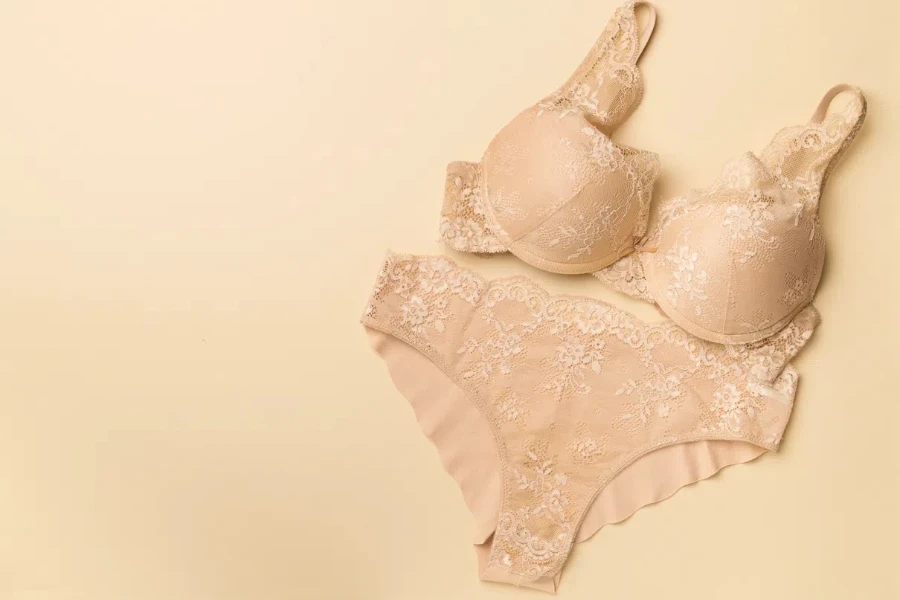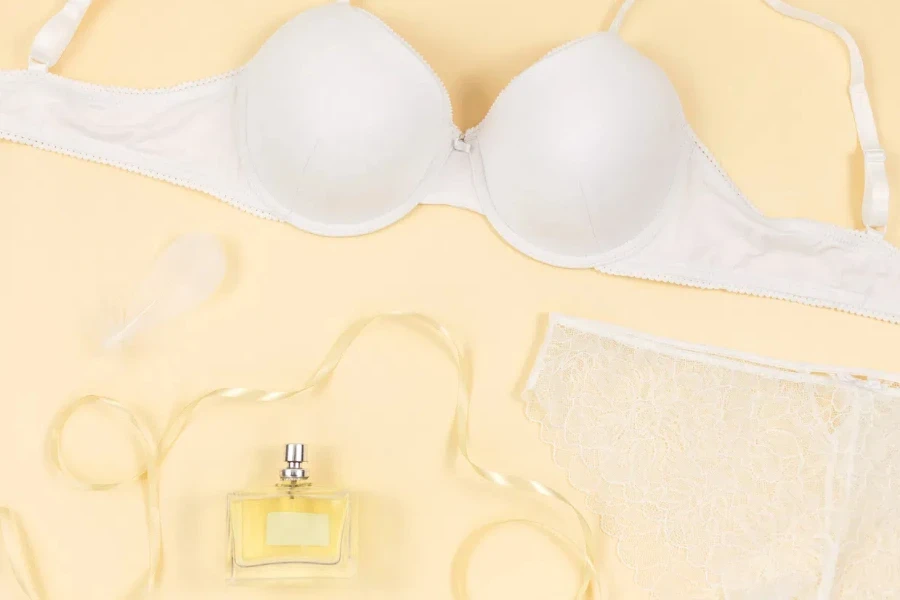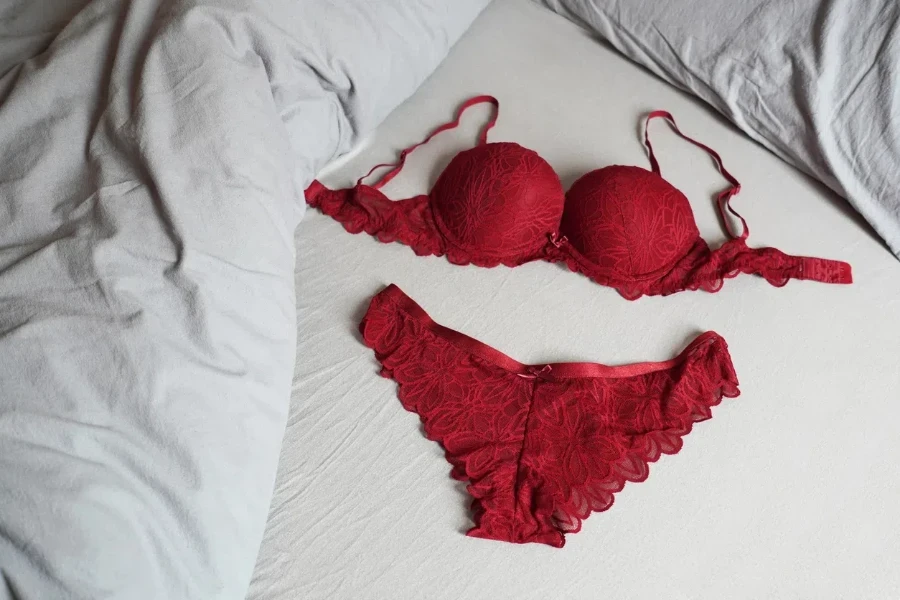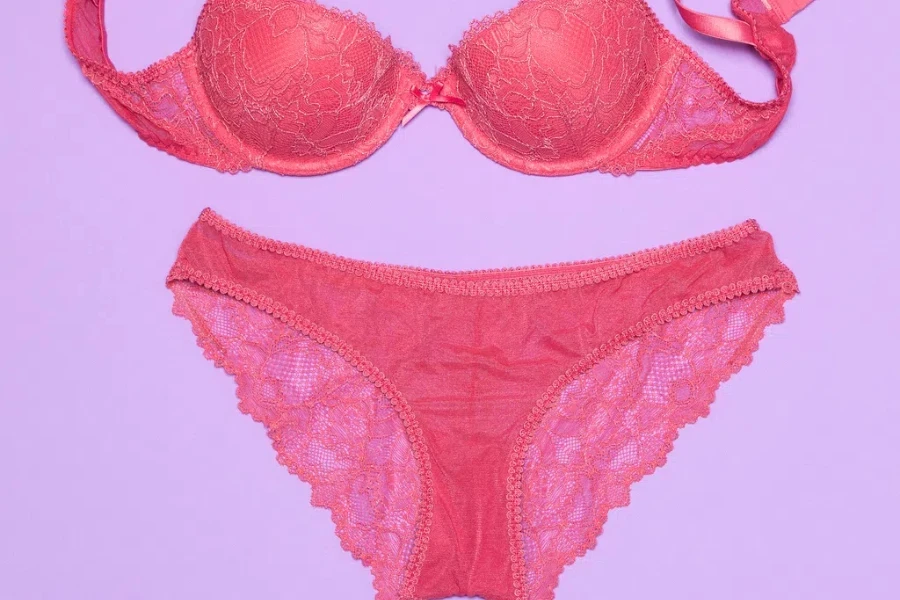The bra and panty set market has seen significant growth and transformation over the past few years. With increasing consumer demand for comfort, style, and functionality, this segment of the apparel industry is evolving rapidly. This article delves into the global demand, key market players, and emerging opportunities in the bra and panty set market.
Table of Contents:
– Market Overview
– Innovative Designs and Trends in Bra and Panty Sets
– Materials and Fabrics Shaping the Market
– Functionality and Features Driving Consumer Choices
– Cultural and Heritage Influences on Bra and Panty Sets
– Conclusion
Market Overview

Global Demand for Bra and Panty Sets
The global market for bra and panty sets is experiencing robust growth, driven by changing consumer preferences and increasing disposable incomes. According to Research and Markets, the global women lingerie market, which includes bras and panties, grew from USD 59.07 billion in 2023 to USD 62.52 billion in 2024. It is expected to continue growing at a CAGR of 6.17%, reaching USD 89.85 billion by 2030. This growth is fueled by a shift towards lingerie that combines aesthetic appeal with comfort and functionality.
Technological advancements in fabric and design have also played a crucial role in this market expansion. Innovations such as adjustable sizing, integrated support structures, and fabric technologies that adapt to body temperature and movement have enhanced the user experience, broadening the appeal of modern bras and panties. Additionally, the rise of online retail platforms has exponentially increased accessibility to a wide range of lingerie products, facilitating growth through convenience and variety.
Key Market Players and Their Strategies
Several key players dominate the bra and panty set market, each employing unique strategies to capture market share. Victoria’s Secret, for instance, has strategically expanded its market presence by launching a dedicated lingerie range on its Indian website, catering to the growing demand for quality and branded intimate wear among Indian consumers. Similarly, Triumph International has solidified its presence in the Indian market by opening new franchise stores, such as the one at GVK Mall in Hyderabad, offering a wide array of innerwear and loungewear styles.
Another notable player, Bold & Bae Fashion, a Mumbai-based startup, has introduced a premium collection that spans lingerie, loungewear, beachwear, casualwear, and athleisure. By leveraging contemporary digital platforms and a direct-to-consumer (D2C) approach, Bold & Bae Fashion ensures a seamless and secure shopping experience for its customers.
The competitive landscape is further enriched by brands like ARAKS, BareWeb, Inc., CALIDA GROUP, and Cosabella, which focus on sustainability and ethical manufacturing processes. These brands cater to the growing consumer demand for eco-conscious lingerie, emphasizing organic and recycled materials.
Emerging Markets and Growth Opportunities
Emerging markets present significant growth opportunities for the bra and panty set industry. The Asia Pacific region, encompassing China, Japan, and India, is experiencing substantial growth in the women’s lingerie market. This growth is driven by increasing disposable incomes, a burgeoning middle class, and a growing emphasis on personal well-being. According to Research and Markets, the Asia Pacific region accounted for a significant share of the market in 2023, with consumers investing more in personal care and fashion, including intimate lingerie.
In North America, the United States and Canada represent significant markets characterized by high consumer spending on lingerie products. North American consumers prioritize brand loyalty, with a significant emphasis on sustainability and ethical manufacturing processes. There is also a high demand for size inclusivity and body positivity, with brands that cater to a wide range of body types gaining market share.
The European market is at the forefront of embracing eco-conscious lingerie, with a strong demand for organic and recycled materials. Consumers in this region are well-informed and place a premium on sustainability, driving brands to innovate and offer eco-friendly options.
Innovative Designs and Trends in Bra and Panty Sets

Popular Cuts and Styles
The lingerie industry is constantly evolving, with new cuts and styles emerging to meet the diverse needs and preferences of consumers. Popular cuts in bra and panty sets include balconette, plunge, and bralette styles. Balconette bras, known for their wide-set straps and horizontal cup seams, offer a lifted and rounded shape, making them a favorite for enhancing cleavage. Plunge bras, with their deep V-necklines, are perfect for low-cut tops and dresses, providing both support and a flattering silhouette. Bralettes, on the other hand, have gained immense popularity for their comfort and versatility. Often unlined and wire-free, bralettes are ideal for everyday wear and can double as stylish outerwear when paired with sheer tops or blazers.
Panty styles have also seen a variety of trends, from high-waisted briefs that offer full coverage and a retro vibe to cheeky and thong styles that provide minimal coverage and a seamless look under clothing. High-waisted briefs are particularly popular for their ability to smooth and shape the midsection, while cheeky and thong styles are favored for their no-show appeal under tight-fitting garments.
Trending Colors and Patterns
Color and pattern trends in bra and panty sets are influenced by seasonal changes, cultural events, and fashion forecasts. For Spring/Summer 2025, vibrant and playful colors are making a statement. According to the Curve New York S/S 25 report, hyper-bright color palettes such as Sunset Coral, Aquatic Awe, and Radiant Raspberry are set to dominate the market. These bold hues are perfect for creating impactful pieces that stand out both in-store and online.
Patterns are also evolving, with floral prints remaining a mainstay. The influence of the Netflix show Bridgerton has spurred a resurgence of English country garden references, with delicate floral prints and embroidery becoming popular. Brands like Noblesse Oblige embody this trend with soft, feminine colors and intricate floral designs. Additionally, nautical themes with sheer and solid stripes are emerging, adding a touch of coastal nostalgia to lingerie collections.
Seasonal Influences on Design Choices
Seasonal changes play a significant role in shaping lingerie design choices. For the warmer months, lightweight and breathable fabrics are essential. Summer styles often feature sheer materials, lace, and mesh to keep wearers cool and comfortable. Sun-faded colors and tonal jacquards add interest to monotonal styles, creating a relaxed and effortless look.
In contrast, fall and winter collections tend to incorporate richer, deeper colors and heavier fabrics. Velvet, satin, and silk are popular choices for their luxurious feel and warmth. Darker hues like burgundy, navy, and emerald green are favored, often accented with metallic details or intricate embroidery to add a touch of opulence.
Materials and Fabrics Shaping the Market

Sustainable and Eco-friendly Fabrics
Sustainability is a growing concern in the fashion industry, and the lingerie sector is no exception. Consumers are increasingly seeking eco-friendly options, prompting brands to explore sustainable materials. Organic cotton, bamboo, and recycled fabrics are becoming more prevalent in bra and panty sets. These materials not only reduce environmental impact but also offer benefits such as breathability, softness, and hypoallergenic properties.
Brands like Cosabella and Harper Wilde are leading the charge in incorporating sustainable fabrics into their collections. By using organic and recycled materials, these brands are catering to the eco-conscious consumer while maintaining high standards of comfort and quality.
High-performance Materials for Comfort and Durability
Comfort and durability are key factors driving consumer choices in lingerie. High-performance materials such as microfiber, modal, and spandex blends are popular for their ability to provide a snug fit, moisture-wicking properties, and long-lasting wear. These materials are particularly favored in everyday and activewear lingerie, where comfort and support are paramount.
Microfiber, known for its ultra-soft texture and lightweight feel, is a staple in many lingerie collections. Modal, derived from beech tree pulp, offers a silky-smooth finish and excellent breathability. Spandex blends, with their stretch and recovery properties, ensure a perfect fit and maintain the shape of the garment over time.
The Role of Texture in Consumer Preferences
Texture plays a significant role in consumer preferences for lingerie. Lace, mesh, and satin are popular choices for their tactile appeal and aesthetic qualities. Lace, with its intricate patterns and delicate feel, adds a touch of femininity and elegance to bra and panty sets. Mesh, often used in combination with lace or embroidery, provides a modern and edgy look while offering breathability.
Satin, with its smooth and glossy finish, exudes luxury and sophistication. It is often used in special occasion lingerie, such as bridal sets, to create a glamorous and romantic feel. The combination of different textures in a single piece can enhance the overall design, making it visually appealing and unique.
Functionality and Features Driving Consumer Choices

Comfort and Support Features
Comfort and support are paramount when it comes to choosing lingerie. Features such as adjustable straps, underwire support, and padded cups are essential for providing a comfortable fit and adequate support. Brands are also incorporating innovative design elements to enhance comfort, such as seamless construction, wide bands, and soft, breathable fabrics.
According to the Curve New York S/S 25 report, brands like Harper Wilde are introducing practical features such as embossed timelines on bra clasps, which recommend where to fasten the bra as it stretches and wears. This attention to detail ensures that consumers can enjoy a comfortable and supportive fit throughout the lifespan of the garment.
Versatility and Multi-functionality
Versatility and multi-functionality are increasingly important in lingerie design. Consumers are looking for pieces that can serve multiple purposes, such as convertible bras with removable straps that can be worn in different ways. Reversible bralettes, like those offered by Bra Bar, provide a two-in-one look, making them a practical and stylish choice for teens and young adults.
Multi-functional lingerie is also gaining popularity in the activewear segment. Compression bras with back panel airflow, like those designed by Understance, offer support and comfort during physical activities while ensuring breathability. These versatile pieces cater to the active lifestyle of modern consumers, providing both functionality and style.
Technological Advancements in Lingerie
Technological advancements are revolutionizing the lingerie industry, with innovations aimed at enhancing comfort, support, and accessibility. Brands are incorporating features such as magnetic closures, Velcro straps, and front zips to make lingerie easier to put on and take off. These features are particularly beneficial for individuals with disabilities or post-surgery needs.
Magnetic Me, for example, offers nightwear with magnetic closures to aid consumers with arthritis and other disabilities. This focus on inclusivity and accessibility ensures that lingerie is available to a wider range of consumers, meeting their specific needs and preferences.
Cultural and Heritage Influences on Bra and Panty Sets

Regional Preferences and Styles
Cultural and regional preferences play a significant role in shaping lingerie designs. Different regions have unique tastes and styles, influenced by local traditions, climate, and fashion trends. For instance, European lingerie often features intricate lace and embroidery, reflecting a preference for elegance and sophistication. In contrast, American lingerie tends to prioritize comfort and practicality, with a focus on seamless construction and versatile designs.
Traditional Designs and Modern Adaptations
Traditional designs continue to inspire modern lingerie collections, with brands incorporating elements of heritage into contemporary styles. Bridal lingerie, for example, often features traditional elements such as delicate lace, pearl detailing, and broderie anglaise. The Everyday Bride trend, reported by Curve New York S/S 25, sees these bridal aesthetics seeping into mainline collections, with white, off-white, and blush tones becoming key colors.
Modern adaptations of traditional designs ensure that these pieces remain relevant and appealing to today’s consumers. Playful placement embroidery, as seen in the collections of brands like Zhilyova and Mey, adds a contemporary twist to classic lingerie styles, making them fresh and exciting.
Influence of Cultural Events and Festivals
Cultural events and festivals have a significant impact on lingerie trends. Valentine’s Day, for instance, sees a surge in demand for sexy and romantic lingerie styles. Heart motifs, sheer materials, and statement bows are popular choices for this occasion, as reported by Curve New York S/S 25. Similarly, bridal lingerie collections are influenced by wedding seasons and cultural shifts in wedding traditions.
Festivals and cultural celebrations also inspire unique and vibrant lingerie designs. The use of bright colors, bold patterns, and playful details reflects the festive spirit and adds a touch of fun to lingerie collections.
Conclusion
The bra and panty set market is a dynamic and ever-evolving landscape, driven by innovative designs, material advancements, and cultural influences. As we look to the future, sustainability, inclusivity, and technological advancements will continue to shape the industry, offering consumers a diverse range of options that cater to their unique needs and preferences. Brands that embrace these trends and prioritize comfort, functionality, and style will undoubtedly thrive in this competitive market.




